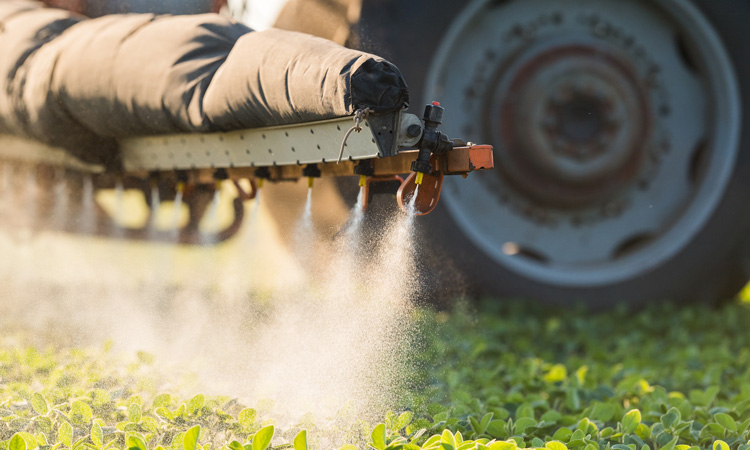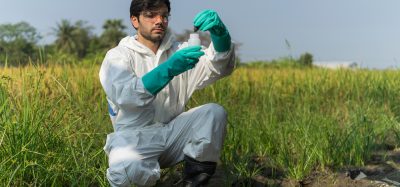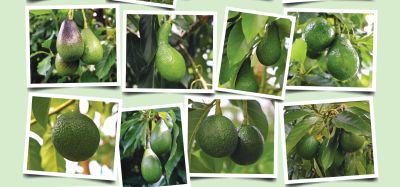Top 3 obstacles to sniffing out pesticides and how to beat them
Posted: 17 December 2021 | Sciex | No comments yet
Efforts to meet global food demands must be balanced with the need to protect the health of the planet. Here, SCIEX presents the main obstacles encountered during pesticide analysis along with some effective means of assuring pesticide residue limits are adhered to.


Pesticides are important in agricultural use, but the residues that remain in our food must be tested and measured
When supply plunged and demands surged in the agricultural sector during the pandemic, food producers felt enormous pressure. The imbalance tipped the scales more than anticipated. For food producers, this meant potentially not having access to sufficient pesticides1 — a vital tool to protect plants and enhance crop yields — to accommodate the market needs.
According to United Nations Food and Agriculture Organization (FAO), pesticide use increased by one-third between 2000 and 2018.2 Last year, the global use of pesticides rose to about 3.5 million tons.3 While favourable for crops, extensive pesticide use is not good for the ecosystem, which is why we have seen more governance introduced across the globe to regulate pesticide usage. For example, China introduced a national standard in September to regulate more than 300 pesticides in food.4 This means food producers are now forced to adhere to stringent limits and requirements to include effective pesticides screening methods as part of their procedures.
To assist with adhering to these rules, we want to highlight the top three pesticide testing challenges you may face, and how you can overcome them.
1. Meeting stricter regulatory requirements
Establishing maximum residue levels (MRLs) in food is vital for public health and helps protect the environment. The Federal Food, Drug, and Cosmetic Act (FFDCA) authorises the US Environmental Protection Agency (EPA) to set tolerances, or MRLs, for pesticide residues in foods5 and, as regulations become increasingly strict, it is crucial that these limits are met. When testing for pesticide residues in food, sensitivity is key. Additionally, because food can be an extremely complex matrix, robust instrumentation is equally important. The use of the Zeno trap on the ZenoTOF 7600 system results in > 90 percent duty cycle, thereby enhancing sensitivity throughout the entire mass range. The sensitivity enhancements can be used to quantify low levels of pesticides and have demonstrated the ability to meet regulatory requirements.
2. Increasing global food trade
As food trade across the globe increases, so does the demand for food testing and analysis. High-speed analysis while maintaining confidence in results is crucial to remove pressures on testing labs. SCIEX instruments have acquisition speeds that provide enough data points across the chromatography peak to achieve excellent data quality, even when analysing large panels of pesticides.
3. New to pesticide analysis and/or have difficulty setting up a pesticide analysis method?
You might have the right tools for the job, but not always the correct methods. When you purchase a SCIEX mass spectrometer, we can set your lab up with a vMethod application that will help you analyse samples with high confidence in a very short period of time — even if you are new to LC-MS/MS. The vMethod application outlines a step-by-step standard operating procedure, starting with sample preparation and ending with a customer-editable sample result report that will help lab staff perform analyses with minimal training. In addition, SCIEX Support provides invaluable assistance for your mass spectrometry questions. We aim to fully assist you with virtually every instrument application, helping you get the most from your lab resources and assets.
Watch our webinar Pesticide residues – we’re on to you! here.
References
- Lamichhane JR, Reay-Jones FPF. Impacts of COVID-19 on global plant health and crop protection and the resulting effect on global food security and safety. Crop Protection (Guildford, Surrey) 139 (2021). https://doi.org/10.1016/j.cropro.2020.105383
- 2020. World Food and Agriculture – Statistical Yearbook 2020. Rome. https://doi.org/10.4060/cb1329en
- Sharma A, Kumar V, Shahzad B, et al. Worldwide pesticide usage and its impacts on ecosystem. SN Appl. Sci. 1, 1446 (2019). https://doi.org/10.1007/s42452-019-1485-1
- National food safety standard—Determination of 331 pesticides and metabolites residues in foods of plant origin Liquid chromatography-tandem mass spectrometry method. GB 23200.121—2021. 2021
- EPA Federal Food, Drug and Cosmetic Act. https://www.epa.gov/laws-regulations/summary-federal-food-drug-and-cosmetic-act









